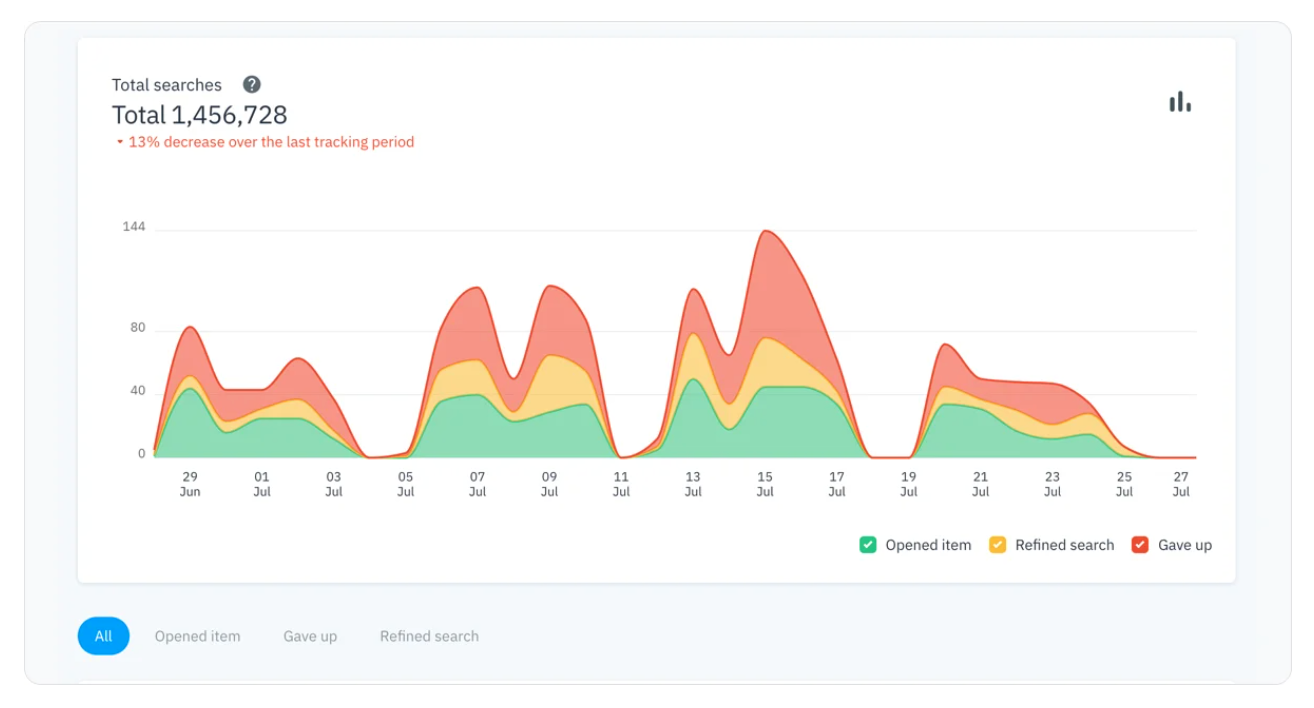

Jonathan Davies
13 mins read
Start building your digital home with Happeo
Request a demoYou know it’s time for an update – a digital transformation in the form of an intranet provider.
But you want to make sure you take the necessary steps toward successful intranet software that meets all of your company’s needs.
To identify the organizational issues that an intranet provider needs to address in your enterprise, you’ll need an intranet needs analysis. An intranet needs analysis will give you a clear picture of the Internal Communications issues in your organization that you’ll need to tackle.
It’s a big task, so we’re going to break it down for you into 7 steps. These steps will guide you through asking the right intranet needs analysis questions to yield the results you are looking for in this new software.
Want to see an intranet in action?
Watch our video
7 steps for an intranet needs analysis
- Internal assessment
The first step to building an intranet strategy is to document what you already know is happening internally. Then start thinking of those big-picture questions that you want to ask during the process. The goal here is to identify what needs to be analyzed, then use that data as a basis to create an internet strategy.
You can start with a current state evaluation of your intranet or mass communication/collaboration platform. While the PEST/SWOT analysis (see step four) will objectively address the issues, it’s wise to document the workplace problems that are currently being observed by employees and leadership. What has caused you to get to the point of knowing you need to implement or update your intranet software?
To create a framework for your needs analysis, you will need to decide what organizational goals you want your intranet provider to help you reach. Do you want your provider to:
- Streamline and store data?
- Unite and collaborate with employees?
- Digitize the way the company runs?
- Empower employees to create and innovate?
- Increase productivity by cutting down time spent on projects?
- Get a competitive edge?
Once you can determine a few main goals to work towards, you can structure the needs analysis process and eventually your intranet strategy around this goal. Basically, you need focus to work off. One that will define the types of questions you want to ask. These are questions you can ask your direct colleagues before taking them to the stakeholders. Keep in mind, the end goal of an intranet is always to make the job easier for the user.
- Build a team and an intranet analysis strategy
Now it’s time to choose a team to carry your enterprise through the needs analysis process. To choose a team, you will need to think of the experts in the field, the people who will be most impacted by the switch, and those with an important voice in the company. Identify any project sponsors or champions and include them in the process. These are the people who will implement and build the intranet analysis questions to ask stakeholders and staff.
Bring your initial internal assessment findings to your team to discuss the intranet analysis techniques that can be utilized to collect your data. Then, you can brainstorm to come up with your questions and decide who will be questioned or observed in this process.
When deciding who to include in the interviewing process, remember that the most valuable data will come from employees who are conducting the day-to-day activities for the company, and not the overseeing managers. Including managers in the intranet analysis questions can be strategic if they are intentionally chosen as a specific group of users, or if they will boost support and help the adoption process. Remember: employees are more likely to take company news seriously when it comes from their manager.
Who should be included in the interviewing and observing process:
- Key staff across each department
- Senior staff members
- Current intranet provider or IT managers
- New hires
- Remote staff
- Social media developers
- Administrative staff
After you decide on the “who”, you need to figure out the “what.” Keeping your focus and business goals in mind, you and your team will need to draft the intranet-needs analysis questions you want your stakeholders to answer. - Keep questions closed-ended and specific to easily gauge and analyze the results, and to avoid lengthy, unhelpful results.
- Choose multiple choices, a Likert scale (rate from 1-5), or a list of statements to choose from.
While the question-asking strategy is up to you, here are some sample intranet categories of interest that you will want to cover in your analysis: - Company collaboration (emails, meetings, Internal Communications)
- Current intranet usage (frequency, efficiency, importance)
- Software usability (search features, UI, speed)
- Content creation and editing
- Data storage and management
- Social collaboration (employee directory, blogs)
- Task management
- Areas of improvement
- Interviews, surveys, and field studies
The planning and prepping are done, and it’s time to implement the intranet strategy and take it to the people. There are multiple different intranet analysis techniques you can use to collect employee opinions and assess your company’s intranet software needs. To get an accurate sampling across your enterprise, you want to utilize multiple techniques to avoid any bias or unclear results. Take a look at the techniques and think of what will work best for your business’s working style, but we are going to recommend and highlight interviews, surveys, and field studies.
Advantages of online surveys
Creating an online survey will most likely be the most efficient method for surveys and will set you up to analyze the data efficiently. But, surveys can yield biased results if your sample size is too low.
Advantages of interviews
For interviews, you can choose to do individual interviews, group interviews, or focus groups. An individual interview will give you a more detailed picture of a specific user's wants and needs, but it is limited in its scope. Group interviews bring more players into the game and can help paint a broader picture of the needs, but you need to work to keep the entire team engaged and on track. Ideally, you would use a combination of these techniques to achieve the most accurate results.
Advantages of field studies
A recent article posted by the Nielsen Norman Group asserts that field studies are the way to go when asking intranet survey questions: “Observing users in their natural work environment provides realistic context and representative data, unveils mismatches between users’ mental models and designers’ beliefs about them, and builds empathy with end-users.”
The idea here is that there is a big difference between what people say they do and what they actually do.
Observing them in their context shows you step-by-step, exactly what is happening in the workplace. You may catch something that they aren’t even recognizing in their own approach. Field studies are also a great way to promote empathy for the user and see how the intranet provider can be flawed instead of the user. But before conducting these field studies, your intranet analysis team needs to decide on a specific note-taking and rating system. How else will you get quantifiable results?
Discover all the features of an intranet?
Download feature list
- PEST and SWOT analysis
Don’t click away. We know, it’s old – ancient even. But they really work.
What is a PEST analysis?
The PEST analysis is a framework used to assess the external P - political, E - economic, S - social, and T - technological factors that influence the environment in which an organization thrives.
What is SWOT analysis?
A SWOT analysis is a tool used to identify an organization's internal strengths and weaknesses, while also identifying external opportunities and threats.
How can PEST analysis and SWOT analysis help with intranet analysis?
Aside from the employee opinion results, a SWOT (Strengths, Weaknesses, Opportunities, and Threats) analysis and a PEST (Political, Economic, Social, and Technological) analysis can help produce objective, unbiased results to guide your intranet strategy.
The PEST analysis should come first, as it “examines the macro-level factors that make up the environment that the organization exists within.” This assesses the needs of your company based on this large-scale analysis of the environment your company sits in.
On the other hand, a SWOT analysis helps you narrow down and focus your results compared to the broad-ranged results you’ll see from a PEST analysis.
How to conduct PEST analysis?
To conduct a PEST analysis, your business leadership team will need to identify:
Political factors: current legislation and political elements that affect the legal standing of your business
Economic factors: country and/or state’s current economic standing, unemployment rates, taxes, etc.
Social factors: customer demographic, level of health and education, socio-cultural attitudes and beliefs
Technological factors: new or emerging technologies, technology trends, competitor’s technology, etc.
How to conduct a SWOT analysis?
To conduct a SWOT analysis, your team will need to identify company:
- Strengths: employees, finances, competition, research capabilities
- Weaknesses: things that your competitors do better, lacking resources, and limiting physical elements
- Opportunities: external factors that can help your business grow like the outside perception of your business and market growth
- Threats: external factors that could put your business at risk, like competitors, external workplace or market trends, consumer behavior, and technology
Then, take the answers from these questions and organize them in a way that allows you to collect and analyze the data. These results, along with the results from the surveys and interviews should give you a solid understanding of your intranet software needs.
- Data collection and analysis
After actually asking the intranet analysis questions, it’s time to analyze the results. This is where your original intranet analysis team comes into play to help sort through and organize the data collected. You will want to remain focused on the original business goals you identified in Step One and use those as a framework for your data. And remember, this data is going to point you to specific intranet strategies and features you can implement to solve these issues. You are looking to create a list of requirements for your intranet provider.
When analyzing your data, you want to look for specific patterns and commonalities in the responses to help you organize. Then, you can think about certain intranet features or larger organizational functions that intranets can address and organize results into those categories to come up with your intranet requirements list.
Here are some examples of intranet requirements:
- Improving Internal Communication
- Document management, knowledge management and content management
- Improving employee engagement
- Suitable for two-way communication
- Making intranet accessible from home and on mobile device
- Integrating with third-party tools
- Providing easy ways to onboard new employees
- Managing calendars and embedding events
- Providing task and project management
- Enabling collaboration within departments and across the company
- Corporate branding possibilities
Determine the major issues that are impeding your staff from doing their jobs, figure out any social or cultural barriers within your workplace that are affecting the success of your current intranet strategy, and decide what are the main areas where IT support is constantly needed. After the analysis of the problems, your team can work towards an intranet strategy to provide a solution.
- Define intranet requirements and needs
The next step is taking all of your organized data from your intranet analysis questions and defining your intranet and requirements. This step is very important because this will be the blueprint and guide to your intranet strategy. You can use this collective data to create your intranet implementation plan or to create an intranet RFP to send out to different vendors.
It is also important to note that during your analysis, you will find that some of your issues are larger or broader than can be fixed by an intranet provider. This information is still important to your business, so be sure to note it, but when defining your intranet needs remember to stay specific to features you know can be included in your intranet software.
Now is the time to start thinking of your intranet strategy or intranet software providers. Whoever is going to build or provide your system, you want your intranet requirements to be clearly communicated. So, it’s time to get organized! It’s recommended to create a spreadsheet that clearly communicates your intranet needs and requirements. As always, be sure to keep the user in mind. You want to include the features that are going to make the everyday tasks of your employees easier and more efficient.
Here are some tips to help you determine and define your requirements:
- Determine “wants” from “needs.” Prioritize your needs so the vendor/builder knows what to focus on
- Quantify data when possible and be as specific as you can
- Explain why you need this feature, who will be using it, and how they will be using it
- Keep every department in mind and make sure you include features that will address issues across the board
- When in doubt, explain the issue at hand to your intranet software providers and let them figure out a solution for you
If you are considering purchasing your intranet from a third-party provider, this would be a good time to start researching those companies to get an idea of exactly how specific intranet software and features could provide solutions for your internal problems. And if you understand the company, it will give you a good framework for what requirements to list and how to communicate them.
Want to see how Happeo helps your business?
Book a demo
- Finalize and set project limitations
When you nail down your requirements list, you will have all your intranet-needs analysis questions answered and translated into an organized collection of intranet necessities, but what is left is to create a true plan of action.
This step can be easily looked over, but it is so important to your intranet’s success. Your senior staff members and team need to assess the limitations of your intranet project.
- You need a clear, feasible budget. While you may have an amazing, all-inclusive requirements list for your intranet, budgeting for all of those features may be completely unrealistic for your company.
- Think of human resources and any physical limitations you may run into in implementing this plan. Do you have enough staff to handle managing the intranet you are looking for?
- Think about what the implementation and adoption process is going to look like based on your needs analysis. If employees seem to be showing resistance, you will want to create a plan to combat that.
- Think about the way your employees work as well. Is everyone in the office, or are most people working remotely?
You want to consider all of these things when finalizing your intranet plan. It is also smart to think about KPIs and ways that you can build analytics into your intranet software to provide you with data in the future to measure your ROI.
Bringing an intranet strategy to your chosen solution
The point of taking you through this step-by-step process isn’t to force you to checkboxes or provide a fool-proof plan, but instead to launch you into an intranet strategy process that will set your enterprise up for success. Use these steps as the starting point to working through and creating your own intranet strategy. Every company is going to have a different process and different needs, but this guide can help give you ideas and pointers along the way. We want you to be thinking of all of these elements before you decide on an intranet software to create the best possible outcome. Chances are, after asking the intranet needs analysis questions and analyzing the responses, you will discover much more about your own internal workings that will help guide you towards a better workplace.





